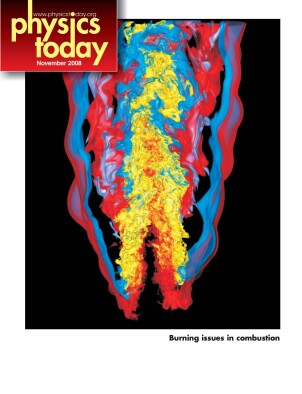Instinctive and learned math abilities are correlated
DOI: 10.1063/1.4796709
When young schoolchildren master the addition tables, the knowledge they obtain relies on symbolic numerical representation. But humans, and even some animals, also have an instinctive nonsymbolic “approximate number system” (ANS) that we use to represent a quantity of items without counting. Justin Halberda of the Johns Hopkins University and colleagues at JHU and the Kennedy Krieger Institute have now established that a person’s ability in applying the instinctive ANS goes hand in hand with learned symbolic numerical ability as measured by standardized exams. In their ANS test, Halberda and colleagues showed 14-year-olds a series of figures such as the one reproduced here. After viewing an image for 0.2 second, each subject attempted to identify which color dot—yellow or blue—was more numerous. To quantify a subject’s ANS acuity, the researchers determined the minimum percent difference that could be reliably discriminated in the number of dots. The ANS ability displayed by the children at age 14 was significantly correlated with the results of standardized math exams they had taken each year from kindergarten through sixth grade. A correlation, though, does not establish a causal connection. Some evidence supports the argument that ANS ability plays a causal role in symbolic math achievements, but other evidence suggests that conventional math training increases ANS acuity. Or perhaps some third factor is the joint cause of instinctive and learned mathematical aptitude. (J. Halberda et al., Nature 455 , 665, 2008 http://dx.doi.org/10.1038/nature07246





